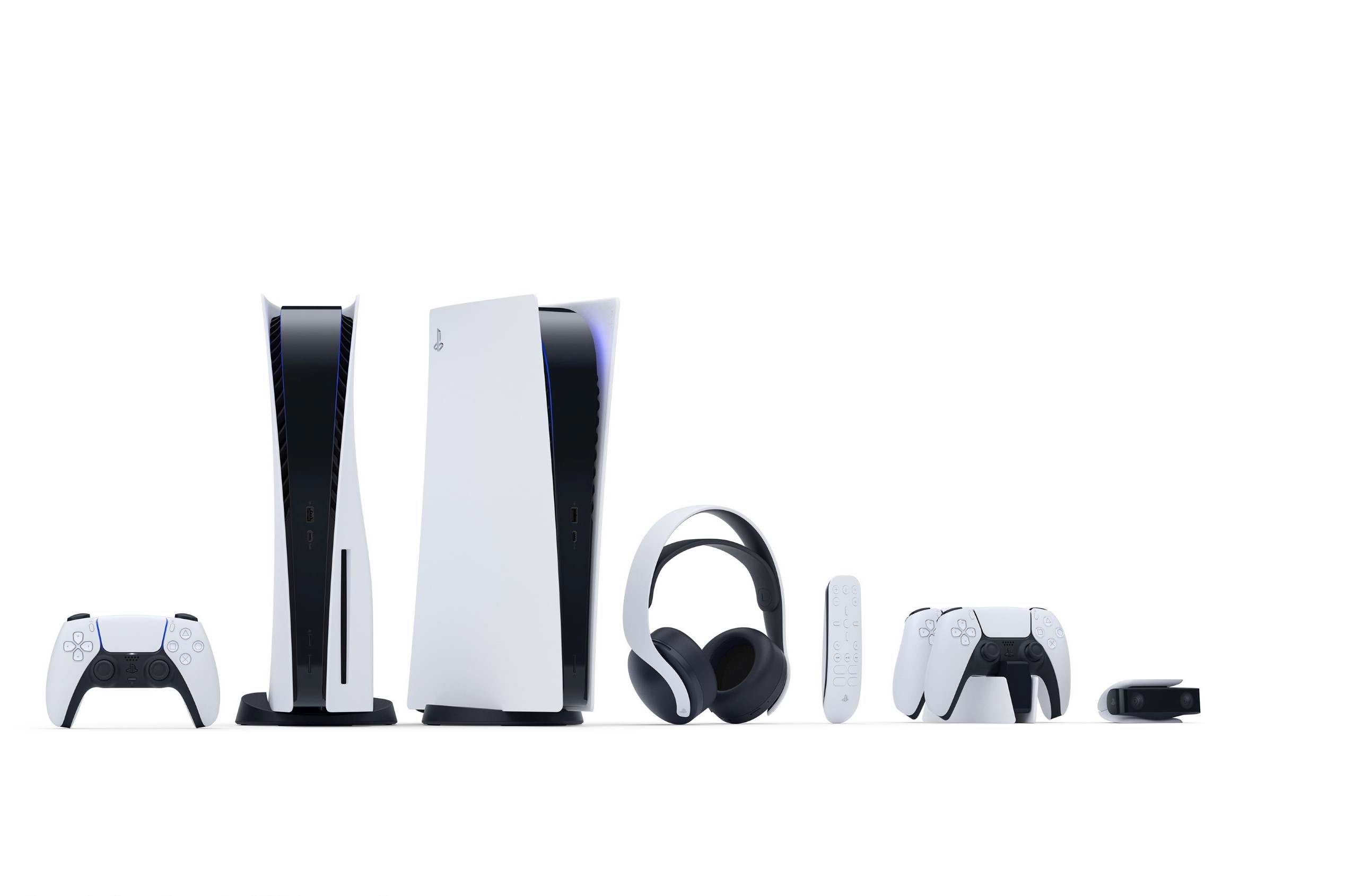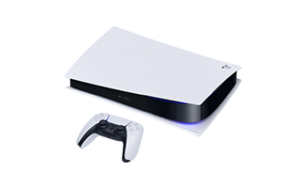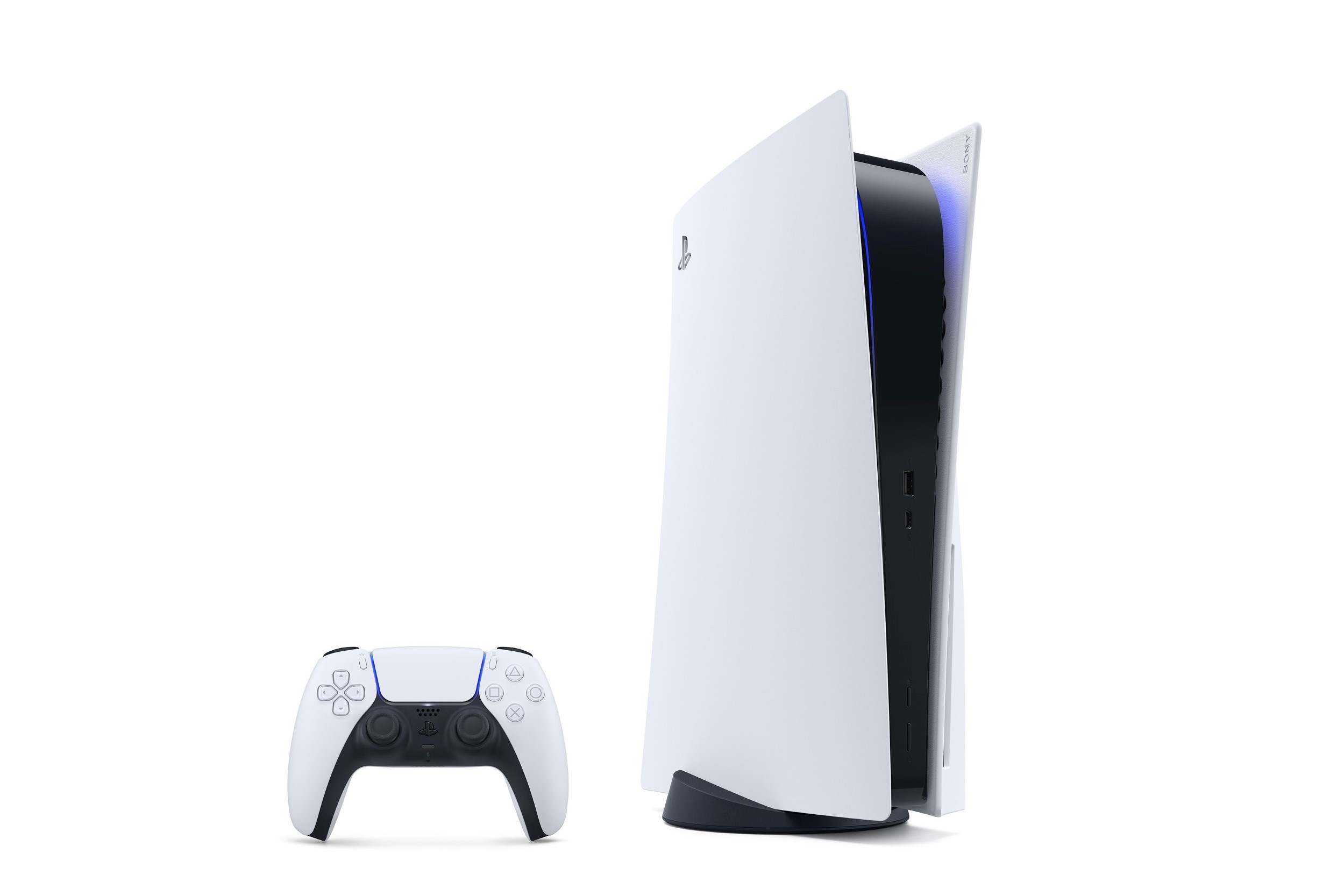Some frustrating teething problems aren’t enough to hold back the PlayStation 5 from being a solid next-gen console.
PlayStation 5 review: Next-gen wow is now
Sony dominated the last generation of consoles with the PlayStation 4, and now that the PS5 release date is upon us (12 November to be specific), it’s a great time to be a PlayStation fan. Even though I’m more a PC gamer than anything else, it’s hard to not be impressed by the PlayStation 5, which ticks almost every box when it comes to what you’d expect from a next-gen console.
While the PS5 won’t launch with a stack of new titles (there are some great options on the way), there’s enough there to sate early adopters – or those lucky enough to buy one before PS5 pre-orders sold out – and the great PS5 news is that Sony’s next-gen console is absolutely worth the cost of admission.
Sony sent me a PlayStation 5 console for review, and here’s what I discovered while putting it through its paces.
What’s in the PlayStation 5 box?
The PlayStation 5 box comes with everything you need to get connected and playing, including an HDMI 2.1 cable for those fortunate enough to have displays that support the higher-bandwidth connection. You also get a DualSense wireless controller, the PS5 console, an AC power cable, a USB-A to USB-C cable for charging the DualSense, and a console stand.
Inititial setup of the PlayStation 5
Beware of the thick cardboard box because, if you’re unlucky like me, you’ll come away with a nasty papercut if you’re too impatient unboxing. Your next challenge is to attach the console stand in either horizontal or vertical configuration. Because of the height of the PS5, you may have to play some TV stand Jenga to get it to fit. It’s worth lining things up before you dedicate to lying it down or standing it up, too.
The stand itself is a little fiddly, but you rotate the base to access a screw that attaches to the base to ensure it’s a reliable foundation (use a screwdriver or coin to turn the screw). After this, connect power, HDMI, and the USB cable to the DualSense wireless controller and you’re ready for configuration.
That USB cable is only needed for the initial pairing with the PS5 and for charging, and then it’s a case of following a few basic prompts to get ready to play. There are quite a few tooltip pop-ups that are great the first time, but annoying after they appear for the third time. Still, when you fire up the PS5 for the first time, the honed UI redesign, sound effects, and feel of the DualSense all have an appropriate next-gen feel.
Hopefully, Sony will have ironed out some of the setup kinks by the time the PlayStation 5 is made available at retail. For me, I had to add then re-add my PSN account multiple times before it would stay permanently, even when I was keeping the PS5 in a low-power hibernated state.

PlayStation 5 DualSense controller
There’s a good reason why you should take Astro’s Playroom for a spin before playing anything else, even if you only end up interacting with the short DualSense tutorial. This is where you understand the true potential of the “haptic feedback” and “adaptive triggers” buzzwords that have been floating around for DualSense.
Like the Nintendo Switch Joy-Cons, the DualSense has a wider range of vibration, meaning it’s not simply a case of vibration on or off. It adapts in intensity and location depending on what you’re doing in a game. For the triggers, they can automatically adjust the tension based on particular tasks, shifting from a breezy no-effort pull to something that truly fights back.
Couple this feel with an improved mouse-like touchpad, rejigged lighting (on the top instead of the back), and an improved inbuilt microphone that can be used for speaking and, strangely, blowing, and the next-gen immersion possibilities are inspiring. It also helps that the DualSense is the right weight and size so these next-gen features don’t get in the way of all-important practicality.
Perhaps most importantly, it has an inbuilt rechargeable battery with great longevity.
PlayStation 5 next-gen games and graphics
There will always be third-party games to buy on day one of a console launch, but what really helps seal the deal for those torn between camps is the first-party exclusives that are on offer. In a move that harkens back to Alex Kidd being built into the Sega Master System, Astro’s Playroom comes preinstalled on the PlayStation 5, so you’re guaranteed to have something to play.
While it is four-ish hours of gameplay that amounts to a glorified tech demo, it’s more of a love letter to PlayStation fans, particularly as it relates to the inclusion of some of Sony’s greatest and lesser-known games and hardware. There are other full-fledged launch exclusives, though:
- Marvel’s Spider-Man: Miles Morales
- Demon’s Soul
- Godfall
- Bugsnax
- Sackboy: A Big Adventure
The majority of my review time with the PS5 has been spent playing Miles Morales, with those other games under separate embargoes. If you’ve seen the trailers, you know how gorgeous Miles Morales is. What you won’t see in the trailers is how quickly it all loads. It takes no more than a few seconds to get from the PlayStation 5 home screen into the game’s menu, and then when you click to start or continue, you load into the game almost instantly.
Miles Morales is a particularly great testament to the power of solid-state storage, most notably in how boosted asset streaming means you can hit faster speeds. While the PS4 iteration of Marvel’s Spider-Man certainly made you feel like Spidey, Miles Morales takes it to a new level thanks to how fast you can zip above streets and between buildings. It’s honestly something that never gets old, and while you can use a basically instantaneous fast-travel system, you really shouldn’t.
There is a catch, though. By default, Miles Morales is set to Fidelity Mode, which caps the frame rate at 30 frames per second (fps) in order to boost the eye candy and inject next-gen features like admittedly beautiful ray tracing. Alternatively, you can lose some of that next-gen sheen and opt for 60fps (with dynamic 4K) in Performance Mode.
Outside of my visual comparison tests, which forces the game to reload when switching between Fidelity and Performance, I always favoured Performance Mode because that 60fps feels so much smoother and more responsive. For me, it’s ultimately a better pairing for the pace at which Miles Morales plays out, not just in terms of web-swinging but also frantic fights where fast reactions are better complemented by the higher frame rate.
PlayStation 5 backwards compatibility
Sony has confirmed that the “overwhelming majority of PS4 games”, some 4,000+, are playable on the PlayStation 5, which is great for those with a library of last-gen games. You can transfer games from PS4 to PS5 via WiFi, Ethernet, or by configuring a compatible external hard drive as expanded storage on the PlayStation 4, then connecting that to the PlayStation 5.
In an effort to preserve precious internal storage (more on this below), I opted to use an external hard drive. The PlayStation 4 understandably won’t let you transfer games to the external drive until they’re fully up to date, but even though they were patched before transfer, more patching was required when I connected the hard drive to the PlayStation 5.
The PS5 seemed happy enough to patch last-gen games on the external drive in the background while I played Miles Morales, which it has done with other game updates, but then my PlayStation 5 hard crashed and desynchronised with the DualSense. Powering the console off and on with the physical buttons resulted in sound with no image, and it wasn’t until I reconnected the DualSense via USB cable that I was able to get it working properly again.
Similar to the PS4 rebuilding its library after a crash (or powering off when it’s in a low-power state), the PlayStation 5 then had a “repairing console storage” message. Everything was fine once that repair finished, but it’s hard to tell whether that crash was because of the game, the external hard drive updates, or a combination of both.
Once the games were updated, a few weren’t playable: I’d try to open them and it would come up with a “Can’t start the game or app” error and the game wouldn’t start. Transferring those games to the internal storage didn’t make them playable, but redownloading from my digital library did.
PlayStation 5 storage space
As I eluded to above, limited internal storage makes it a precious resource on the PS5. And considering there’s only 667.2GB of internal storage free on the PlayStation 5, it’s a waiting game to find out how much the Sony-approved NVME drives will cost for more next-gen storage.
I say “next-gen storage” because while you can play PS4 games from a compatible hard drive, next-gen games must be played from internal storage: either what comes with the console or what you pay to add on via the tucked-away expansion port. External hard drives can be used to archive games that you don’t want to redownload, but they need to be transferred to internal storage to play. On top of this, it’s a one-way cut-and-paste affair, so it looks like you won’t be able to share game installations to save on download time if you have multiple PS5s in your home.
This would be less frustrating if transferring games from an external drive to internal storage didn’t force you to wait. You can’t play a game while it happens or even back away from the transfer screen. If you do, it cancels the process. On top of this, by default, PS4 games download by default to an attached external drive, so head to the settings menu if you want to install them to your internal storage.
Is the PlayStation 5 worth the price ($749.95RRP)?
The PlayStation 5 is worth the launch price, but if you haven’t secured a pre-order already, the chances are good you’ll be waiting until 2021 to buy one. That’s not altogether a bad thing as it gives Sony time to iron out some of the kinks I experienced during my tests.
With a console that (theoretically) plays thousands of PlayStation 4 titles out of the box, and a handful of exclusive console launch titles to justify the price of admission, the next-gen appeal of the PlayStation 5 is very real.
Games load incredibly quickly from internal storage, they look great, and the DualSense overhaul absolutely sticks the landing. Speaking of internal storage, it’s likely to be a problem for avid gamers who want lots of fast-loading next-gen options to play, but being forced to pick between quality games to play is one of the better problems to have.
Related Articles







